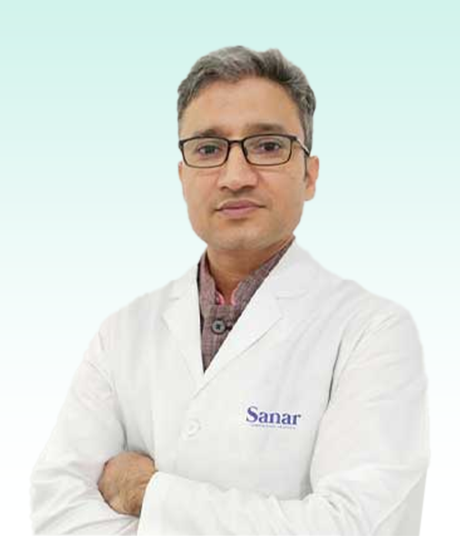Open Radical Prostatectomy is a surgical procedure performed to remove the prostate gland and surrounding tissues in cases of localized prostate cancer. It is considered the gold standard treatment for early-stage prostate cancer and involves the complete removal of the prostate gland, seminal vesicles, and nearby lymph nodes. This procedure aims to remove the cancerous tissue while minimizing the impact on urinary and sexual functions.

Who Needs Open Radical Prostatectomy
Open Radical Prostatectomy is typically recommended for individuals with localized prostate cancer who meet specific criteria. The decision to undergo this procedure is made by a multidisciplinary team of healthcare professionals, including urologists and oncologists.
When to See a Specialist
If you have been diagnosed with prostate cancer or have concerns regarding your prostate health, it is advisable to seek a specialist’s opinion.
Procedure
The process of Open Radical Prostatectomy typically involves the following steps:
- Anesthesia: Before the surgery, you will be given general anesthesia to ensure that you are unconscious and pain-free during the procedure.
- Incision: The surgeon will make an incision in the lower abdomen, between the belly button and the pubic bone, to access the prostate gland.
- Prostate Removal: The surgeon will carefully remove the entire prostate gland, including the seminal vesicles, while preserving the adjacent nerves responsible for erectile function.
- Lymph Node Dissection: In some cases, nearby lymph nodes are also removed and examined to determine if the cancer has spread.
- Bladder and Urethra Reconstruction: After removing the prostate, the surgeon will reconnect the bladder and urethra to restore normal urinary function.
- Closure: The incision will be closed with sutures or surgical staples, and drains may be placed to remove excess fluid from the surgical site.
- Recovery: You will be moved to the recovery area, where medical professionals will closely monitor your vital signs and provide pain management as needed.
Road to Recovery
The road to recovery after Open Radical Prostatectomy involves several stages:
- Hospital Stay: You will typically spend a few days in the hospital following the surgery. During this time, medical professionals will monitor your vital signs, manage pain, and ensure proper healing.
- Catheter Care: A urinary catheter will be inserted to help drain urine from your bladder while it heals. You will receive instructions on how to care for the catheter and manage any discomfort.
- Pain Management: You may experience some pain or discomfort in the surgical area. Your healthcare team will provide appropriate pain medications to help manage your discomfort.
- Physical Activity: Gradual resumption of physical activity is encouraged as it promotes healing and helps prevent complications. However, strenuous activities and heavy lifting should be avoided for several weeks.
- Follow-up Appointments: You will have regular follow-up appointments with your healthcare team to monitor your recovery, assess urinary and sexual function, and address any concerns or complications that may arise.
Risk Management
While Open Radical Prostatectomy is generally safe, there are some potential risks and complications associated with the procedure:
- Erectile Dysfunction: One of the main concerns after surgery is the potential for erectile dysfunction. The nerves responsible for erections may be affected during the procedure, leading to temporary or permanent erectile dysfunction. However, advancements in surgical techniques aim to preserve nerve function and improve outcomes.
- Urinary Incontinence: Another potential complication is urinary incontinence, which involves the inability to control urine flow. This can occur immediately after surgery but often improves over time as the body adjusts. Pelvic floor exercises and other interventions may be recommended to improve bladder control.
- Infection: Like any surgical procedure, there is a risk of developing an infection at the surgical site or in the urinary tract. Antibiotics may be prescribed before and after surgery to minimize this risk.
- Bleeding: Although rare, excessive bleeding can occur during or after surgery and may require additional interventions, such as blood transfusion or further surgical exploration.
- Deep Vein Thrombosis (DVT): Surgery increases the risk of developing blood clots in the legs (DVT) or lungs (pulmonary embolism). Measures such as early ambulation, leg exercises, and blood-thinning medications are implemented to prevent these complications.
- Bowel or Bladder Dysfunction: In some cases, the surgery may lead to changes in bowel or bladder function, such as constipation or difficulty emptying the bladder. Medications, dietary adjustments, and other interventions can help manage these issues.
Benefits of Open Radical Prostatectomy:
Open Radical Prostatectomy offers several benefits for individuals with localized prostate cancer:
- Cancer Control: The removal of the prostate gland aims to eliminate the cancerous tissue and reduce the risk of cancer recurrence.
- High Cure Rates: Open Radical Prostatectomy has shown high cure rates, particularly for localized prostate cancer.
- Improved Urinary Symptoms: Many men experience improvements in urinary symptoms, such as frequent urination or weak urine flow, following the surgery.
- Long-Term Survival: Open Radical Prostatectomy has been associated with improved long-term survival rates for individuals with localized prostate cancer.
- Pathological Examination: The surgical removal of the prostate allows for a detailed examination of the tissue, providing important information for staging and determining the need for further treatment.
- Peace of Mind: For many patients, the removal of the cancerous prostate provides a sense of relief and peace of mind, knowing that the cancer has been treated.
Frequently Asked Questions
1. What is the success rate of Open Radical Prostatectomy?
Open Radical Prostatectomy has a high success rate in terms of cancer control for localized prostate cancer. However, the success rate can vary depending on factors such as the stage of cancer, the skill of the surgeon, and individual patient characteristics.
2. Will I experience urinary incontinence after the surgery?
It is common to experience temporary urinary incontinence following Open Radical Prostatectomy. However, the majority of patients regain urinary control over time, especially with the help of pelvic floor exercises and other post-operative interventions. In some cases, long-term or permanent urinary incontinence may occur, but it is relatively rare.
3. Will I still be able to have sexual intercourse after Open Radical Prostatectomy?
Open Radical Prostatectomy can potentially cause erectile dysfunction, particularly if the nerves responsible for erections are affected during the surgery. However, advancements in surgical techniques, such as nerve-sparing procedures, aim to preserve sexual function. Recovery and the ability to engage in sexual intercourse vary from person to person, and additional treatments such as medications or devices may be recommended to aid in sexual function.
4. How long does it take to recover after Open Radical Prostatectomy?
The recovery time can vary depending on various factors, including the individual’s overall health, the extent of surgery, and any complications that may arise. In general, it takes several weeks to a few months for most individuals to recover fully and resume normal activities. Your healthcare team will provide specific guidelines and monitor your progress throughout the recovery period.
5. Are there alternative treatments to Open Radical Prostatectomy?
There are alternative treatments for localized prostate cancer, such as radiation therapy, brachytherapy (internal radiation therapy), and active surveillance (monitoring the cancer without immediate treatment).
Treatment Plans
- Trauma & intensive care $59
- Aged Care $29
- Community Services $25
- Diagnosis & Investigation $48
- Medical & Surgical $82
- Mental Health $74
- Rehabitation $24
- Specialised Support Service $19
- Trauma & intensive care $59
- Aged Care $29
- Community Services $25
- Diagnosis & Investigation $48
- Medical & Surgical $82
- Mental Health $74
- Rehabitation $24
- Specialised Support Service $19
Treatians As The Best Choice
Treatians understand that seeking medical treatment abroad can be a daunting experience for patients and their families. That’s why the company offers end-to-end support to its clients, from the initial consultation to post-treatment care. The company provides personalized treatment plans that are tailored to meet the individual needs of each patient, and its team of dedicated professionals is always on hand to provide guidance and support throughout the entire process. Contact us at +91-7982312582, drop your email [email protected]
- Trauma & intensive care
- Aged Care
- Community Services
- Diagnosis & Investigation
- Medical & Surgical
- Mental Health
- Rehabitation
- Specialised Support Service
Service Recipient Says

Oxmox advised her not to do so, because there were thousands of bad Commas, wild Question Marks and devious.
Kolis Muller NY Citizen
Oxmox advised her not to do so, because there were thousands of bad Commas, wild Question Marks and devious.
Kolis Muller NY Citizen






















Oxmox advised her not to do so, because there were thousands of bad Commas, wild Question Marks and devious.
Kolis Muller NY Citizen